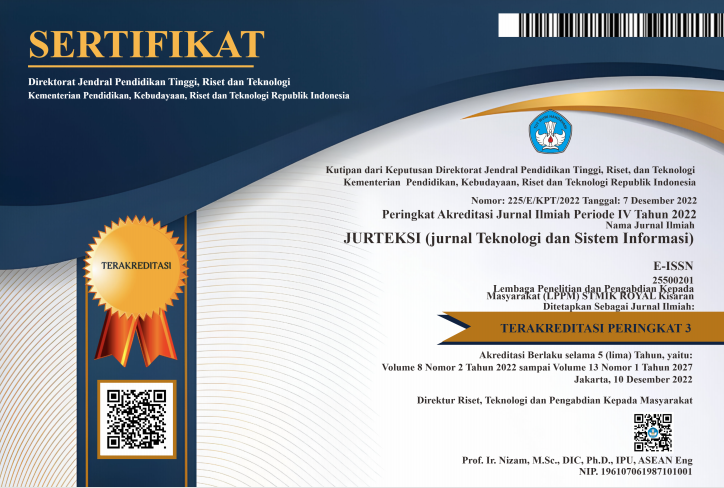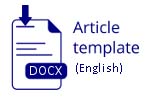LITERATURE REVIEW OF THE APPLICATION FRAMEWORK IN THE ENTERPRISE ARCHITECTURE OF SECONDARY SCHOOLS
Abstract
Abstract: The widespread use of information and communication technology (ICT) has enhanced effectiveness and quality in management, research, and education at educational institutions. In this digital age, secondary schools are required to improve operational efficiency and educational strategies through the use of information technology. Therefore, the implementation of an enterprise architecture (EA) framework is crucial to ensure a strategic alignment between educational goals and technology. However, before implementing the framework, schools must evaluate various factors that influence the suitability and effectiveness of EA, including current technology needs, staff competencies, existing infrastructure conditions, and other factors. This study gathers and analyzes data from related studies, and the results indicate the importance of understanding EA principles to optimize academic and administrative processes. By considering variables in the selection of the EA framework, evaluating school readiness, and identifying existing challenges, this research aims to assist secondary schools in effectively implementing EA. The expected outcome of this research provides theoretical support for the adoption of EA, thus facilitating more efficient strategic and operational planning in secondary schools.
Keywords: enterprise architecture; framework; information and communication technology; secondary school.
Abstrak: Penggunaan teknologi informasi dan komunikasi (TIK) secara luas telah meningkatkan efektivitas dan kualitas dalam manajemen, penelitian, dan pendidikan di institusi pendidikan. Di era digital ini, sekolah menengah dituntut untuk meningkatkan efisiensi operasional dan strategi pendidikan melalui pemanfaatan teknologi informasi. Oleh karena itu, penerapan framework arsitektur enterprise (EA) menjadi penting untuk memastikan aliansi strategis antara tujuan pendidikan dan teknologi. Namun, sebelum penerapan framework dilakukan, sekolah harus mengevaluasi berbagai faktor yang mempengaruhi kesesuaian dan efektivitas EA, termasuk kebutuhan teknologi terkini, kompetensi staf, kondisi infrastruktur yang ada, dan faktor lainnya. Penelitian ini mengumpulkan dan menganalisis data dari studi terkait, hasilnya menunjukkan bahwa pentingnya pemahaman tentang prinsip-prinsip EA untuk mengoptimalkan proses akademik dan administratif. Dengan mempertimbangkan variabel-variabel dalam pemilihan framework EA, evaluasi kesiapan sekolah, dan identifikasi tantangan yang ada, penelitian ini bertujuan untuk membantu sekolah menengah dalam mengimplementasikan EA secara efektif. Diharapkan hasil dari penelitian ini memberikan kontribusi teoretis yang mendukung pengadopsian EA, sehingga memfasilitasi perencanaan strategis dan operasional yang lebih efisien di sekolah menengah.
Kata kunci:arsitektur enterprise; framework; sekolah menengah; teknologi informasi dan komunikasi.
References
A. K. Megha, “An assessment of vertical and horizontal impact of information and communication technology (ICT) on business,†Int J Health Sci (Qassim), vol. 6, no. S2, pp. 13012–13017, Jun. 2022, doi: 10.53730/ijhs.v6nS2.8423.
O. Serrat, “Information and Communication Technology in Organizations: Impacts and Implications,†Mar. 2021.
Dr. A. Anjum, S. Chauhan, Mr. Kartikeya, and M. I. Iqbal, “Role of ICT innovations in Business Efficiency and Effectiveness: An Empirical Investigation,†European Economic Letters, 2023, [Online]. Available: https://api.semanticscholar.org/CorpusID:258147382
B. Nikolova, “Information and Communication Technologies – a Contemporary Tool for Education,†Vocational Education, vol. 25, pp. 67–72, Feb. 2023, doi: 10.53656/voc23-151komu.
L. ANTONYAN and N. ARAKELYAN, “MAIN COMPONENTS OF SCHOOL MANAGEMENT MODEL USING INFORMATION AND COMMUNICATIONS TECHNOLOGIES,†Main Issues Of Pedagogy And Psychology, vol. 10, pp. 87–98, Apr. 2023, doi: 10.24234/miopap.v10i1.460.
D. Susilo, M. D. Nugroho, and D. Ruswanti, “Student Tuition Fee Management Using Web-Based Application System,†Tepian, vol. 4, no. 2, pp. 80–88, 2023, doi: 10.51967/tepian.v4i2.2643.
A. S. Nugroho, W. W. Winarno, and H. Al Fatta, “STRATEGIC INFORMATION SYSTEMS PLANNING AND INFORMATION TECHNOLOGY FOR SCHOOL,†2020, doi: 10.21107/Widyagogik/v8i1.8250.
R. Jakaria Rahmanto, W. Wahyu Winarno, and M. Rudyanto Arief, “DESIGN OF STRATEGIC INFORMATION SYSTEM BLUEPRINT WITH ENTERPRISE ARCHITECTURE PLANNING METHOD.†[Online]. Available: https://injurity.pusatpublikasi.id/index.php/in
J. Beese, S. Aier, K. Haki, and R. Winter, “The impact of enterprise architecture management on information systems architecture complexity,†European Journal of Information Systems, vol. 32, pp. 1070–1090, Nov. 2023, doi: 10.1080/0960085X.2022.2103045.
B. O. Amollo, Dr. J. Agola, and Prof. A. Rodrigues, “A Proposed Evaluation Framework for School Management Information Systems (SMIS) in secondary schools,†International Journal of Scientific and Research Publications (IJSRP), vol. 12, no. 1, pp. 479–496, Jan. 2022, doi: 10.29322/ijsrp.12.01.2022.p12164.
C. Wohlin, E. Mendes, K. Felizardo, and M. Kalinowski, “Guidelines for the Search Strategy to Update Systematic Literature Reviews in Software Engineering,†Inf Softw Technol, Sep. 2020, doi: 10.1016/j.infsof.2020.106366.
R. Kebede, A. Moscati, and P. Johansson, Semantic Web and Linked Data for Information Exchange between the Building and Product Manufacturing Industries: A Literature Review. 2020. doi: 10.46421/2706-6568.37.2020.paper018.
Y. M. Geasela and N. Legowo, “Designing Information System Architecture Based on Education 4.0 Case Study: Senior High School Institutions of Indonesia,†Journal of Computer Science, vol. 18, no. 7, pp. 622–637, 2022, doi: 10.3844/JCSSP.2022.622.637.
M. Anam, R. Hendrawan, T. Fitri, W. Agustin, and A. Zamsuri, “Implementation of The Open Group Architecture Framework to See the Readiness of Smart Schools in Pekanbaru,†Digital Zone: Jurnal Teknologi Informasi dan Komunikasi, vol. 14, pp. 138–150, Nov. 2023, doi: 10.31849/digitalzone.v14i2.14916.
E. M. R. B. Asmara and I. D. Sumitra, “Enterprise architecture planning using TOGAF ADM in computer laboratory software engineering Igasar Pindad Vocational High School Bandung,†in AIP Conference Proceedings, American Institute of Physics Inc., Oct. 2023. doi: 10.1063/5.0175595.
L. S. STT and S. Anardani, “STRATEGIC PLANNING OF SYSTEM INFORMATION STAFF PONDOK PESANTREN WITH ZACHMAN FRAMEWORK APPROACH,†JURTEKSI (Jurnal Teknologi dan Sistem Informasi), vol. 9, no. 1, pp. 1–8, Dec. 2022, doi: 10.33330/jurteksi.v9i1.1263.
M. Hidayat and G. C. Pamuji, “Optimizing New Student Admissions System Using Zachman Framework for Vocational High School: Case Study at SMK Al Hikmah Anjatan,†in INCITEST 2023 - Proceedings of the 2023 International Conference on Informatics Engineering, Science and Technology, Institute of Electrical and Electronics Engineers Inc., 2023. doi: 10.1109/INCITEST59455.2023.10397056.
M. Prakarsa, A. Q. Saleh, and S. Dewi, “Design of Enterprise Information System Architecture with Oracle Architecture Development Process (OADP) Case Study in Vocational High Schools,†International Journal of Quantitative Research and Modeling, vol. 1, no. 4, pp. 217–228, 2020.













